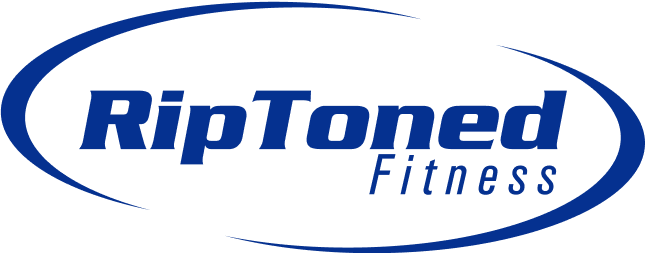Considering hitting the gym post-Botox injections? The blend of cosmetic enhancements and fitness routines is a common query among health-conscious individuals.
While Botox is widely used for its wrinkle-reducing effects, its interaction with weightlifting raises valid concerns. Understanding the impact of strenuous physical activity on freshly treated muscles is crucial for optimal results.
This guide delves into the nuances of combining weightlifting with recent Botox procedures, shedding light on considerations, potential risks, and best practices to help you navigate this balance effectively.
Let's explore the harmony between aesthetic goals and fitness aspirations post-Botox.
What is Botox?
Before delving into the specifics of weightlifting post-Botox, let's understand what Botox is. Botox is a brand name for the neurotoxin botulinum toxin type A, which is produced by the bacteria Clostridium botulinum.
It works by temporarily paralysing muscles that cause wrinkles and lines on the face, resulting in smoother and more youthful-looking skin. Botox treatment is commonly used for cosmetic purposes, but it also has medical applications, such as reducing muscle spasms and excessive sweating.
Botox injections are commonly used for cosmetic purposes, but they can also be used to treat various medical conditions, such as chronic migraines, excessive sweating, and muscle spasms. The procedure involves injecting small amounts of Botox into specific areas of the face or body using fine needles. Results typically last 3-4 months before a touch-up is needed.
How Does Botox Work?
Botox works by blocking nerve signals to specific muscles, preventing them from contracting and causing wrinkles. Injections are typically targeted at the forehead, around the eyes, and between the eyebrows to target common problem areas for lines and wrinkles.
It takes about 3-5 days for Botox to start taking effect, with full results visible after 10-14 days. During this time, it's important to avoid any activities that could potentially interfere with the effectiveness of the treatment. This includes avoiding strenuous physical activity such as weightlifting.
Do Facial Exercises Help Improve Botox?
Facial exercises are often touted as a natural way to enhance the effects of Botox. These exercises involve making exaggerated facial expressions, such as frowning or squinting, to strengthen and tone facial muscles. However, there is no scientific evidence to support the claim that facial exercises can improve the effectiveness of Botox or prolong its results.
Some experts believe that these exercises may counteract the effects of Botox by causing excessive muscle movement in treated areas. It is best to avoid facial exercises immediately after receiving Botox injections. Post-Botox exercise routines should also be carefully considered to ensure optimal results.
Can I Lift Weights After Botox?
The short answer is yes, you can lift weights after getting Botox injections. However, there are certain considerations to keep in mind for optimal results and avoiding potential risks.
Timeframe
First and foremost, it's essential to give your Botox enough time to settle before engaging in strenuous physical activity like weight lifting. The recommended timeframe is at least 24 hours after the injections, but some practitioners may advise waiting up to 48 hours.
During this period, the injected Botox needs time to bind and take effect on the targeted muscles. Exerting too much pressure on these muscles can potentially cause them to disperse, resulting in uneven or diminished results. If you do intense exercise too soon after receiving Botox, you may also experience more bruising or swelling than usual. Vigorous exercise like hot yoga or high-intensity interval training (HIIT) should be avoided for at least a week after Botox treatments.
Type of Weightlifting
The type of weightlifting also plays a significant role in determining when it's safe to resume physical activity post-Botox. Exercises that involve repetitive and intense muscle contractions, such as heavy lifting and resistance training, should be avoided for at least 24 hours.
On the other hand, low-intensity weightlifting that focuses on endurance and flexibility, such as bodyweight exercises and light weights, can be performed sooner. These activities are less likely to affect the injected Botox and allow a faster return to normal physical activity.
Consultation with Practitioner
As with any procedure, it's crucial to consult with your practitioner before resuming physical activity post-Botox. They will have a better understanding of your case and may provide more specific guidelines based on their expertise.
They may also advise you to wait longer than the recommended timeframe if you have received larger amounts of Botox or had multiple areas treated. This is because higher doses may take longer to fully take effect and require more time to settle.
Possible Risks of Lifting Weights After Botox
While it is generally safe to lift weights after Botox, there are potential risks that should be taken into consideration. These include:
- Displacement of Botox: As mentioned earlier, exerting too much pressure on freshly injected muscles can potentially cause the Botox to disperse and affect results. Blood pressure and heart rate increase during weightlifting, which can put additional strain on the targeted muscles.
- Bruising or Swelling: Weightlifting after Botox may increase blood flow to the area, which can lead to bruising or swelling around the injection site. This is more common for exercises involving intense contractions, so it's essential to start slow and gradually increase intensity. Excessive movement and increased blood flow make you more prone to bruising. Exercise after Botox can also cause swelling, particularly if the treated area is close to the exercises.
- Increased Risk of Infection: Weightlifting in gyms or other shared spaces can expose you to potential bacteria or viruses, which could increase the risk of infection at the injection site. It's important to keep the area clean and avoid touching it until it has fully settled.
- Muscle Soreness: Post-Botox muscle soreness can also be exacerbated by weightlifting as muscles are being worked in a different way. Be mindful of your body's reaction and stop if you experience any discomfort or pain.
To minimise these risks, it's crucial to follow the recommended timeframe, avoid strenuous exercise, and start with low-intensity weightlifting before gradually increasing intensity.
Does Working Out Make Botox Wear off Faster?
Contrary to popular belief, there is no scientific evidence to suggest that working out affects the longevity of Botox results. Regular exercise can help maintain overall health and improve circulation, which may indirectly contribute to prolonged results.
However, as mentioned earlier, certain types of weightlifting may cause Botox to disperse more quickly. It's essential to listen to your body and avoid any exercises that strain or excessively work your facial muscles.
Best Practices for Combining Weightlifting with Botox
To minimise the risks and optimise results when combining weightlifting with Botox, here are some best practices to keep in mind:
- Follow the recommended timeframe of at least 24 hours before engaging in strenuous physical activity post-Botox.
- Start slow and gradually increase intensity when resuming weightlifting after Botox injections.
- Avoid exercises that involve repetitive and intense muscle contractions for at least 24 hours.
- Consult your practitioner before resuming physical activity to get personalised guidelines based on your case.
- Be mindful of any bruising, swelling, or discomfort around the injection site and stop if necessary.
- Maintain overall health and fitness through regular exercise, which may indirectly contribute to prolonged Botox results.
Facial procedures such as Botox and physical activity like weightlifting can enhance overall appearance and well-being. By following these best practices, you can safely combine these two activities and achieve desired results without compromising your health or the effectiveness of the treatment.
FAQs
Can I lift weights after undergoing cosmetic treatments like Botox?
Engaging in strenuous weightlifting post-Botox injections is a common concern among individuals considering cosmetic procedures. Understanding the impact of intense exercise on facial muscles treated with Botox is essential for achieving optimal results.
Why should I avoid strenuous exercise after a cosmetic procedure?
By avoiding strenuous exercise, you allow the Botox to settle and fully take effect before putting any strain on the treated muscles. This helps prevent Botox from dispersing and affects results.
What exercise is okay after Botox?
Low-intensity weightlifting focusing on endurance and flexibility, such as bodyweight exercises and light weights, is generally safe to perform after Botox. However, it's important to consult with your practitioner and follow their specific guidelines for your case.
Can working out make Botox wear off faster?
There is no scientific evidence to suggest that working out affects the longevity of Botox results. However, certain types of weightlifting that involve intense muscle contractions may cause Botox to disperse more quickly. It's important to listen to your body and avoid these exercises if necessary.
Conclusion
In conclusion, combining weightlifting and Botox is generally safe, but there are potential risks. Following the recommended timeframe and best practices outlined above, you can safely incorporate weightlifting into your routine without compromising your Botox results. It's essential to listen to your body and consult with your practitioner for personalised guidelines based on your specific case.
With proper care and caution, you can achieve desired results both in terms of physical appearance and overall well-being. So take care of yourself post-Botox and enjoy a healthier, more confident version of yourself! Keep lifting, but lift wisely!


